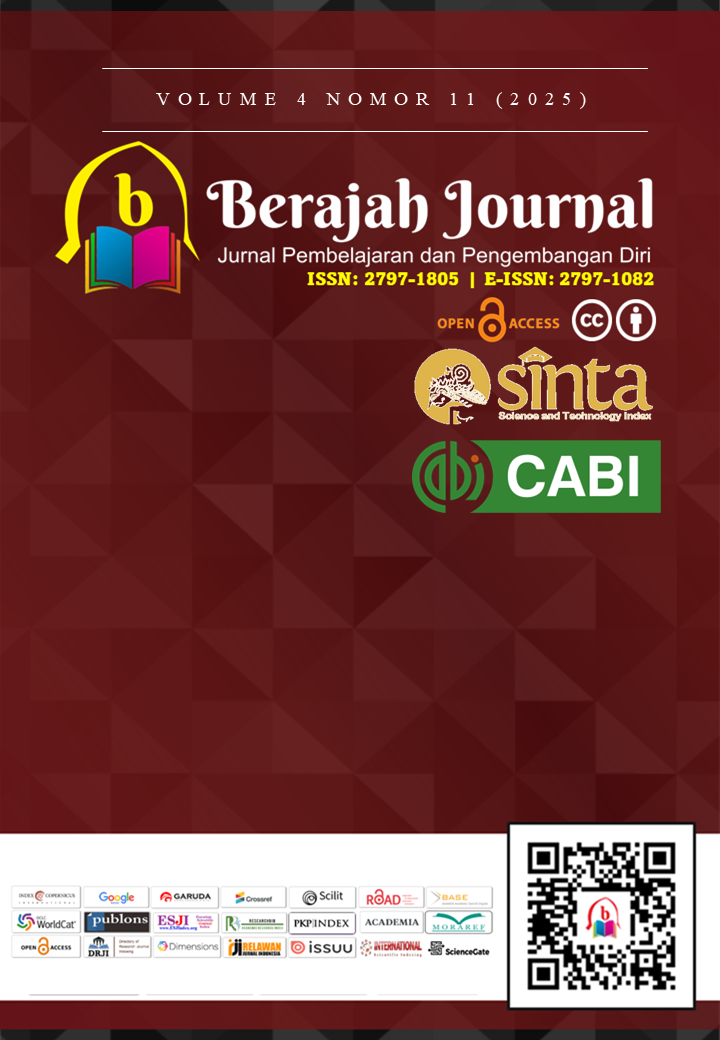EVALUASI KEBIJAKAN PENANGKARAN BUAYA BINAAN BALAI KONSERVASI SUMBER DAYA ALAM SULAWESI TENGAH
DOI:
https://doi.org/10.47353/bj.v4i11.518Keywords:
Policy Evaluation, Crocodile Breeding, Natural Resource ConservationAbstract
Evaluation of the Crocodile Breeding Policy under the auspices of the Central Sulawesi Natural Resources Conservation Agency aims to assess the success and effectiveness of this policy in managing crocodile breeding, as well as its impact on wildlife conservation and community welfare. This study uses a qualitative descriptive method with primary and secondary data collected through interviews, observations, and documentation. Data were obtained from the Central Sulawesi Natural Resources Conservation Agency, breeding partners PT. Mas Indah Permai, and the surrounding community. The analysis was conducted using William N. Dunn's policy evaluation theory, with six indicators: effectiveness, efficiency, adequacy, equity, responsiveness, and accuracy. The results of the study indicate that this crocodile breeding policy is not yet fully optimal. The effectiveness indicator shows that although this program is running well in helping to handle crocodiles, obstacles such as lack of infrastructure and financing still hinder the achievement of objectives. The efficiency and adequacy indicators also show imperfections, especially in terms of the budget and facilities needed. Overall, this program has made a positive contribution to conservation, but still requires improvements in the aspects of regulation and financial support. This study suggests the need to improve policies, regional regulations, and support for breeding partners so that conservation objectives can be achieved more optimally.
Downloads
References
Dimock, M., & Dimock, H. (1992). Public Administration: An Introduction to the Theory and Practice of Public Administration. New York: McGraw-Hill.
Dunn, W. (1995). Analisa Kebijakan Publik. Yogyakarta: Gadjah Mada Press.
Dunn, William N. (2003). Pengantar Analisis Kebijakan Publik. Yogyakarta: Gajah Mada University Press.
Dye, Thomas R. (1992). Understanding Public Policy (7th Ed.). New York: Prentice Hall.
Dye, Thomas R. (2007). Understanding Public Policy (10th Ed.). New Jersey: Englewood Cliffs.
Green, J., & Jenkins, M. (2015). Conservation Strategies: Global Perspectives. Cambridge: Cambridge University Press.
Herbert A. Simon. (1999). Administrative Behavior: A Study of Decision-Making Processes in Administrative Organizations. 4th ed. New York: Free Press.
Leonard D. White. (1999). Introduction to the Study of Public Administration. New York: Macmillan.
Neumann, R. (2014). Conservation and Development: Global Experiences. London: Routledge.
Prasetyo, A. (2019). Kebijakan Penangkaran Satwa Liar di Jawa Timur: Evaluasi Pelaksanaan dan Tantangan. Jurnal Konservasi Alam, 12(2), 34-45.
Rahayu, S. (2017). Peran Pemerintah dalam Perlindungan Satwa Liar di Indonesia. Jurnal Hukum dan Perundang-undangan, 11(2), 101-112.
Rifai, M. (2016). Pengelolaan Sumber Daya Alam Berkelanjutan di Indonesia: Konsep dan Praktik. Bandung: Penerbit Universitas Pendidikan Indonesia.
Siahaan, P. (2018). Kebijakan Pemerintah dalam Pengelolaan Sumber Daya Alam di Indonesia. Jakarta: Rajawali Press.
Sugiyono. (2009). Metode Penelitian Kualitatif dan Kuantitatif. Bandung: Alfabeta.
The Liang Gie. (1993). Pengantar Ilmu Administrasi. Yogyakarta: BPFE.
Winarno, Budi. (2014). Teori Dan Proses Kebijakan Publik. Yogyakarta: Media Pessindo.
Winarno, B. (2016). Kebijakan Publik Era Globalisasi. Yogyakarta: Center of Academic Publishing Service.
Waldo, D. (1971). The Administrative State: A Study of Political Theory. New York: Holt, Rinehart & Winston.
Widyastuti, N. (2021). Analisis Kebijakan Konservasi Buaya di Kalimantan: Studi Kasus di Penangkaran Satwa Liar. Jurnal Kebijakan Publik, 18(1), 78-90.
Williams, A., & Smith, D. (2017). Public Policy and Conservation Strategies. Oxford: Oxford University Press.
Downloads
Published
How to Cite
Issue
Section
License
Copyright (c) 2025 Vernanda Christin, Intam Kurnia, Nasrullah

This work is licensed under a Creative Commons Attribution 4.0 International License.




















